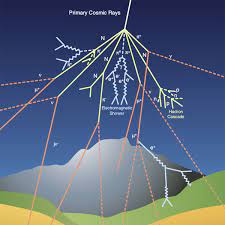What Are Muons?

As per a new study, researchers are examining the fortress wall of Xi’an, an ancient city in China, by using tiny outer space particles called muons that can penetrate hundreds of metres of stone surfaces.
- To analyse 14 kilometres long rampart, researchers deployed a technique called muon tomography or muography, which uses muons to generate three-dimensional images of such large structures.
- Muons are subatomic particles raining from space.
- The muon was discovered as a constituent of cosmic-ray particle “showers” in 1936 by the American physicists Carl D. Andersonand Seth Neddermeyer.
- They are created when the particles in Earth’s atmosphere collide with cosmic rays — clusters of high-energy particles that move through space at just below the speed of light.
- It has two forms, the negatively charged muon and its positively charged antiparticle.
- These particles resemble electrons but are 207 times as massive.
- Therefore, they are sometimes called “fat electrons”.
- Muons are so heavy, they can travel through hundreds of metres of rock or other matter before getting absorbed or decaying into electrons and neutrinos
- They are highly unstable and exist for just 2.2 microseconds.
- Muon tomography was first used in the 1960s, it has only recently gained widespread use among researchers, particularly in archaeology.
- It is conceptually similar to X-ray but capable of scanning much larger and wider structures, owing to the penetration power of muons.
- All that is required is to place a muon detector underneath, within, or near the object of interest.
- The detector then tracks the number of muons going through the object from different directions, to form a three-dimensional image.
- The image is then compared with a muon image of the “free sky.”
- This indicates how many muons have been blocked.
- The final picture is essentially a shadow of the object, in the light of cosmic muons.”




